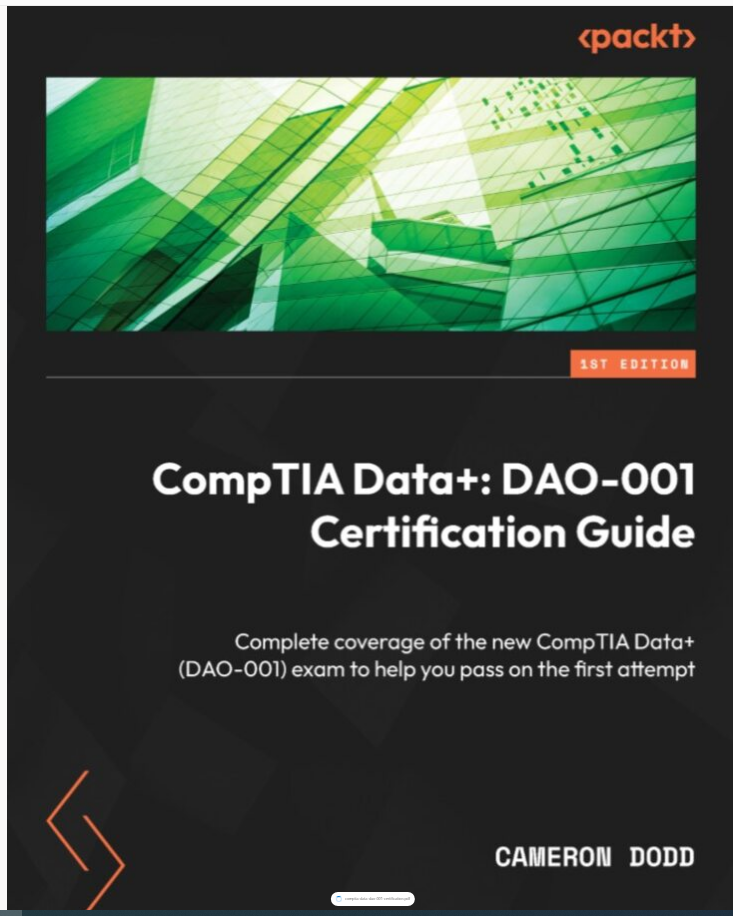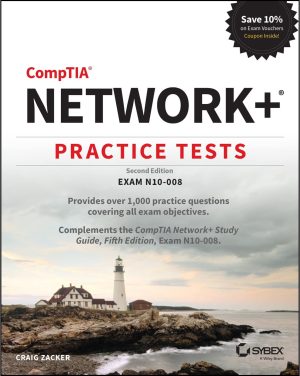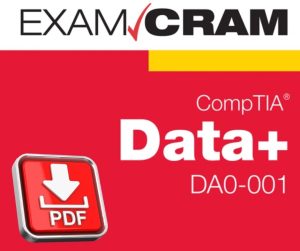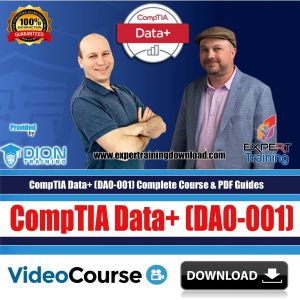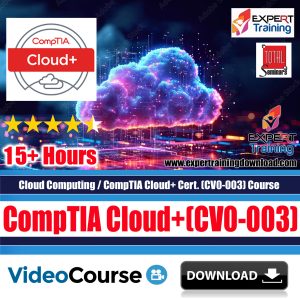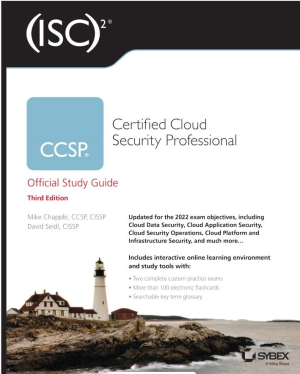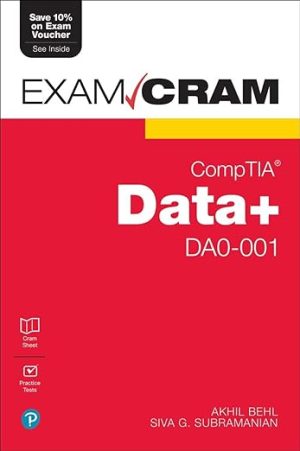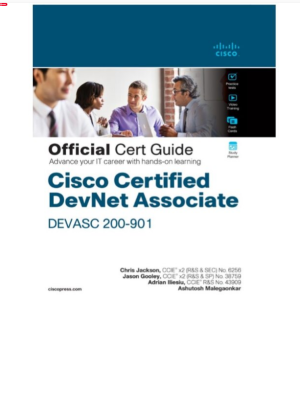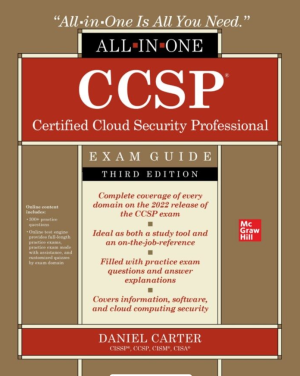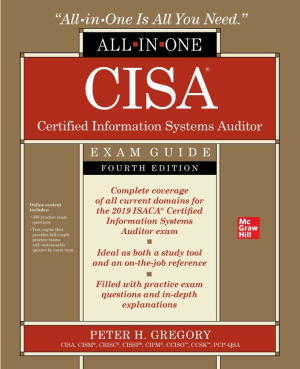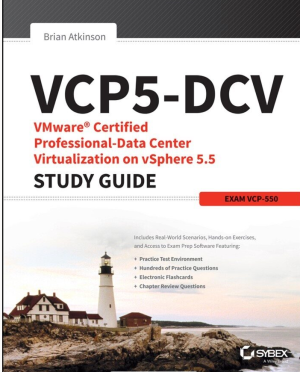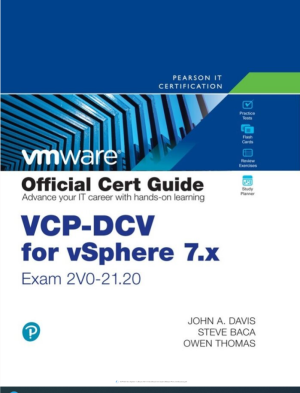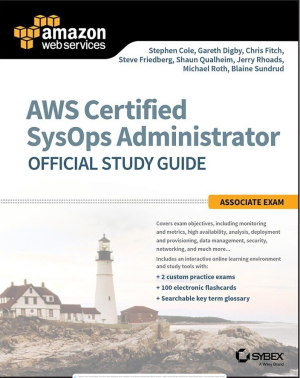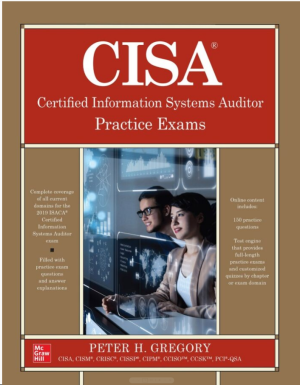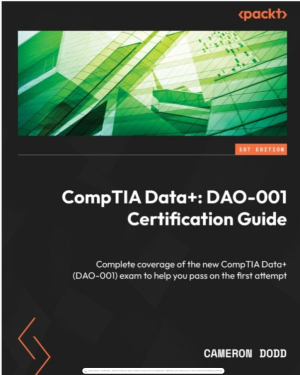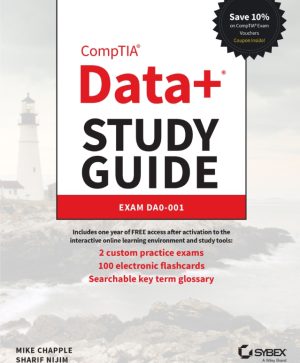Description
CompTIA Data+: DAO-001 Certification Guide
About this book
Introduction to CompTIA Data+
Welcome! This book is designed specifically to teach you everything you need to know to pass the CompTIA Data+ (DAO-001) certification exam. Here, you will learn the ins and outs of each domain covered by the exam, before going over practice questions at the end of every chapter to solidify those lessons. The last chapter of the book contains two mock exams that will test your knowledge and see whether there are any areas you should review before taking the exam. While CompTIA Data+ is a certification worth having, testing for it is not cheap, so we are going to do everything we can to empower you to pass on your first try. Ready? Let’s begin.
This chapter is an introduction to the certification itself. Together, we will talk about what Data + is and the benefits of achieving it. Then, we will briefly go over what sorts of content will be covered by the exam. Finally, we will discuss the format of the exam itself, going over things such as how long you have to take the exam, how many questions there will be, and how they will be distributed across the different exam domains. Our goal here is to understand what Data+: DAO-001 is, so we can start preparing you for it.
In this chapter, we’re going to cover the following main topics:
- Understanding Data+
- Introducing the exam domains
- Going through the exam format
Understanding Data+
Before we dive into specific domains covered by the test and how it is structured, we should briefly discuss what the Data+ certification is and why you should obtain it, as well as why data science is a good field to enter right now. It is important to have a clear understanding of your motivations before you begin.
CompTIA Data+: DAO-001
CompTIA is an organization known for professional and technical certifications, particularly in the field of cybersecurity. The certifications they provide indicate that a person has the knowledge and skill set to perform a specific task. Earning one of these certifications means that you have more credibility in the field and are more likely to be able to enter or move up in the field of your choice. Data+: DAO-001 is the first certification CompTIA has created for data science. It is also one of the first data science certifications by any of the major professional certification companies. This is a major step in standardizing terminology and roles within the field.
Because data science is still a developing field, people are coming in from all sorts of educational and professional backgrounds. What this means is that employers are often not sure what specifically they need to look for and so certifications are becoming more important. As we have seen with some other technical fields, such as cybersecurity, it is difficult to get employed no matter what your background is, unless you have a certification from a recognized organization such as CompTIA.
Important note
Data+: DAO-001 is a vendor-neutral exam. Because data science is so varied, no one tool or software is used in every role. To reflect this, no specific programming language is required to pass this exam. That said, this book uses popular tools or programming languages as examples to help explain certain concepts. These examples are only one way to reach a solution and are meant to reflect broader concepts. You should practice using the tools with which you are most comfortable.
Okay, we’ve established that the CompTIA Data+: DAO-001 certification will help your data science career, but why should you enter the field of data science anyway?
Data science
Data science as a field is simply analyzing data to answer specific questions to help people make better decisions. It involves a little bit of statistics, a moderate amount of programming, and a lot of critical thinking. The concept has been around for a long time; the term data science has even been around since the 1960s. But it is only in the last few years that companies have gotten access to more data than they know what to do with. Large companies aren’t the only ones with a lot of data anymore. Now, medium and even small companies are quickly gathering or purchasing large datasets. All these companies, large or small, now need professionals to store, access, analyze, and report on all this information.
Almost every list you find of the fastest-growing careers in the world will mention data scientist, or one of the other specialties in the data science domain, such as data analyst, data engineer, database administrator, research analyst, statistician, or half a dozen other job titles that end in analyst. It has been gaining in popularity this past decade and is only expected to continue growing in the next decade.
Data science is an exciting field that is quickly changing and developing, with new programs and techniques coming out every year. As the field continues to grow, there will be more and more jobs and opportunities for those who have the right skills and the right certifications. Now that we know why the test is important, let’s talk about what this exam covers.
Introducing the exam domains
The exam was designed by a group of subject matter experts with different specialties in the field of data science. Together, they decided on common ground that any early career data analyst should know. They then categorized that knowledge into the following five domains:
- Data Concepts and Environments
- Data Mining
- Data Analysis
- Visualization
- Data Governance, Quality, and Control
Data Concepts and Environments
The domains move through the data pipeline chronologically. The first domain, Data Concepts and Environments, is largely about how data is stored. This covers multiple levels, from different database types, structures, and schemas, through file types for specific kinds of data, and even into different variable types. This domain is a broad view of storage concepts mixed with the ability to identify what type of data you can expect from different storage solutions.
Data Mining
This domain is a bit of a misnomer. Data mining is when you already have a huge dataset and you just go through it to find any insights that might be of interest, instead of answering specific questions. While data mining, you must go through all the concepts contained within this domain, but you also go through all these concepts for regular data analysis. What this domain is actually about is every step after storing your data but before you run an analysis. This domain includes collecting, querying, cleaning, and wrangling data. Effectively, these are the steps you need to take to get your data into a useful shape so you can analyze it.
Data Analysis
You have stored your data, you have pulled your data and made it pretty, and now it is time to do something with it. This domain is all about analyses. You will be expected to perform descriptive statistical analyses, understand the concepts behind inferential statistics, be able to pick appropriate types of analysis, and even know some common tools used in the field. You don’t need to be able to use any of these tools because the test is vendor-neutral, just be able to identify them.
Visualization
It doesn’t matter how perfect your analyses are if you can’t communicate the results. What’s the point in coming up with an equation that solves world hunger if you can’t explain it to anyone else? To that end, the next domain is all about visualizations and reporting. This covers what information a report should include, what type of report is most appropriate, who should get a report, when reports should be delivered, the basics of report design, types of visualizations, and even the process of developing a dashboard.
Data Governance, Quality, and Control
The final domain is made up of larger concepts that span the entire life cycle of data analytics. A large part of this is made up of policies. Some of the policies focus on protected data and how it can be handled legally, while other policies are more about how you can ensure the quality of your data. If your data has low quality, you can’t trust anything it says, and if you are mishandling protected information, you could face legal penalties, so these are important factors to know. This domain also includes a short section on the concept of master data management, as an example of an ideal state.
Now that you know what domains will be covered on the certification exam, let’s talk about how the exam is structured.
Discover more from Expert Training
Subscribe to get the latest posts sent to your email.

